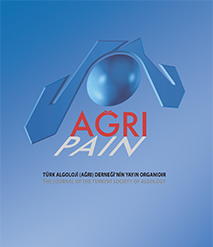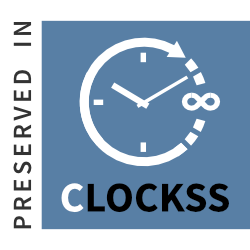The effect of erector spinae plane block on the use of anesthetic medications in lumbar spine surgery
Masoud Nashibi1, Parisa Sezari2, Farhad Safari3, Houman Teymourian4, Sogol Asgari5, Kamran Mottaghi31Department of Anesthesiology, Fellowship of Neuroanesthesia, Anesthesiology Research Center, Shahid Beheshti University of Medical Sciences, Tehran, Iran2Department of Anesthesiology, Anesthesiology Research Center, Loghman Hakim Hospital, Shahid Beheshti University of Medical Sciences, Tehran, Iran
3Department of Anesthesiology, Loghman Hakim Hospital, School of Medicine, Shahid Beheshti University of Medical Sciences, Tehran, Iran
4Department of Anesthesiology, Shohada e Tajrish Hospital, School of Medicine, Shahid Beheshti University of Medical Sciences, Tehran, Iran
5Department of Anesthesiology, Fellowship of Neuroanesthesia, Anesthesiology Research Center, Loghman Hakim Hospital, Shahid Beheshti University of Medical Sciences, Tehran, Iran
Objectives: To reduce the drug side effects and facilitate the emergence from anesthesia after complex spine surgery, various methods have been proposed. One of these methods is ESPB, which has been less studied. Hence, we conducted this study to evaluate the effectiveness of ESPB on the use of anesthetic drugs in lumbar spine surgery.
Methods: In this study, 70 patients undergoing lumbar spine fusion surgery were studied. Patients were randomly divided into two groups: the case group (n=35), in which bilateral ESPB was done, and the control group (n=35). After standard anesthesia protocols, anesthesia was maintained with isoflurane in both groups. Intraoperative isoflurane and perioperative opioid consumption were recorded. Statistical analysis was performed using SPSS software version 21.
Results: Intraoperative use of fentanyl in the case group was significantly lower than the control group (14.29±21.5 vs. 65.96±73.33 µg, p<0.001). Furthermore, isoflurane consumption in the intervention group compared to the controls was significantly lower (20.71±5.02 versus 28.83±8.68 mL, p<0.001). Moreover, the emergence time was significantly shorter in the case group than in the control group (8.49±4.30 minutes versus 15.00±4.94, p<0.001). In the post-anesthesia care unit 1 h after surgery, the pain scores in the case group were significantly lower than the controls (p<0.001).
Conclusion: ESPB under ultrasound guidance is an effective method of regional anesthesia/analgesia for lumbar spine surgery (fusion) by decreasing the consumption of anesthetics during and following the surgery.
Keywords: Anesthetia, erector spinae plane block, isoflurane, lumbar spine, neuroanesthesia, pain, surgery, ultrasound-guided nerve blocks.
Erektör spina plan bloğunun bel omurgası cerrahisinde anestezik ilaç kullanımı üzerindeki etkisi
Masoud Nashibi1, Parisa Sezari2, Farhad Safari3, Houman Teymourian4, Sogol Asgari5, Kamran Mottaghi31Anesteziyoloji Anabilim Dalı, Nöroanestezi Bursu, Anesteziyoloji Araştırma Merkezi, Shahid Beheshti Tıp Bilimleri Üniversitesi, Tahran, İran2Anesteziyoloji Bölümü, Anesteziyoloji Araştırma Merkezi, Loghman Hakim Hastanesi, Shahid Beheshti Tıp Bilimleri Üniversitesi, Tahran, İran
3Loghman Hakim Hastanesi, Anesteziyoloji Bölümü, Tıp Fakültesi, Shahid Beheshti Tıp Bilimleri Üniversitesi, Tahran, İran
4Shohada e Tajrish Hastanesi, Anesteziyoloji Bölümü, Tıp Fakültesi, Shahid Beheshti Tıp Bilimleri Üniversitesi, Tahran, İran
5Anesteziyoloji Anabilim Dalı, Nöroanestezi Bursu, Anesteziyoloji Araştırma Merkezi, Loghman Hakim Hastanesi, Shahid Beheshti Tıp Bilimleri Üniversitesi, Tahran, İran
Amaç: Karmaşık omurga cerrahisi sonrası ilaç yan etkilerini azaltmak ve anesteziden çıkışı kolaylaştırmak amacıyla çeşitli yöntemler önerilmiştir. Bu yöntemlerden biri daha az çalışılmış olan ESPB’dir. Bu yüzden, bu çalışmayı ESPB’nin bel omurgası cerrahisinde anestezik ilaç kullanımı üzerindeki etkinliğini değerlendirmek amacıyla yürüttük.
Gereç ve Yöntem: Bu çalışmada, bel omurgası füzyon cerrahisi geçiren 70 hasta incelendi. Hastalar rastgele iki gruba ayrıldı: Bilateral ESPB uygulanan olgu grubu (n=35) ve kontrol grubu (n=35). Standart anestezi protokollerinden sonra, her iki grupta anestezi isofluran ile sürdürüldü. Ameliyat sırasındaki isofluran ve perioperatif opioid tüketimi kaydedildi. İstatistiksel analiz SPSS yazılımı versiyon 21 kullanılarak yapıldı.
Bulgular: Olgu grubunda intraoperatif fentanil kullanımı kontrol grubuna göre anlamlı derecede düşüktü (14.29±21.5 ve 65.96±73.33 µg, p<0.001). Ayrıca, müdahale grubunda isofluran tüketimi kontrol grubuna göre anlamlı derecede daha düşüktü (20.71±5.02 ve 28.83±8.68 mL, p<0.001). Ayrıca, olgu grubunda çıkış süresi kontrol grubuna göre anlamlı derecede daha kısaydı (8.49±4.30 dakika ve 15.00±4.94, p<0.001). Cerrahi sonrası bir saatte anestezi bakım ünitesinde, olgu grubunun fentanil dozu ve ağrı skorları kontrol grubuna göre anlamlı derecede düşüktü (sırasıyla, p=0.030 ve <0.001).
Sonuç: Ultrason eşliğinde ESPB, cerrahi sırasında ve sonrasında anesteziklerin tüketimini azaltarak bel omurgası cerrahisi (füzyon) için etkili bir bölgesel anestezi/analjezi yöntemidir.
Anahtar Kelimeler: Erektör spina plan bloğu, bel omurgası, cerrahi, anestezi, isofluran, ağrı, nöroanestezi, ultrason ile yönlendirilmiş sinir blokları.
Manuscript Language: English





